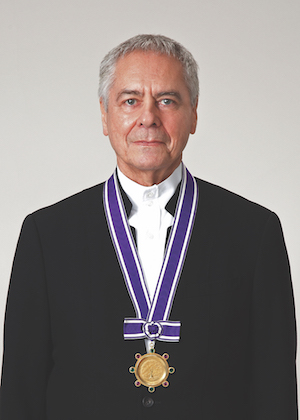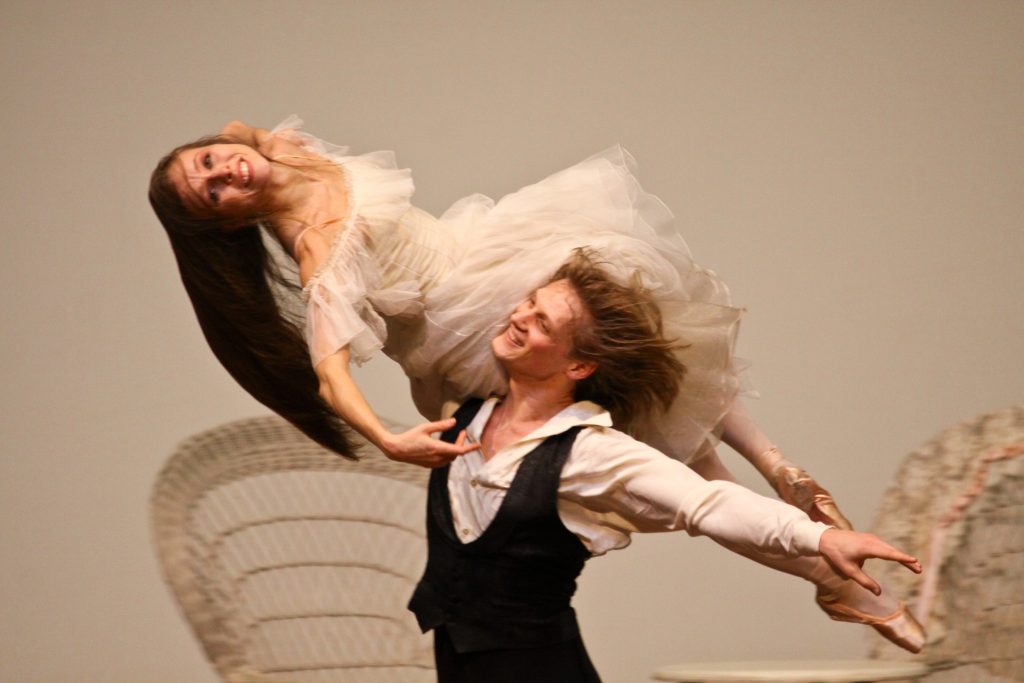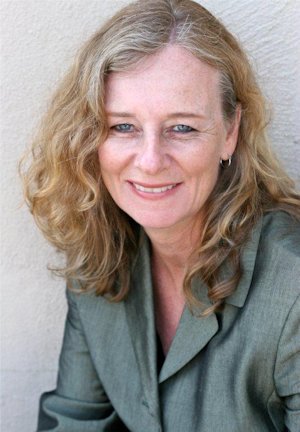Choreographer & Kyoto Prize Winner Presents Lecture, Performance at USD
The American-born choreographer John Neumeier, artistic director of the Hamburg Ballet since 1973, and winner of the 2015 Kyoto Prize in Arts and Philosophy, is here for a symposium before crossing the pond back to Germany.
.

John Neumeier with his Kyoto gold medal. Courtesy image
Neumeier and four principal dancers from Hamburg Ballet flew in from Tokyo Tuesday after a two-week season in Japan.
They will explore “dance as the living shape of emotion” and “Shakespeare as inspiration” in lectures and performances March 17, at the Kyoto Prize Laureate Symposium, held at Shiley Theatre, University of San Diego.
“I will give two lectures,” Neumeier said in a soft, articulate voice, “but I will stop speaking and show something because the very point of verbalization, rational thought, is foreign to dance in a sense.”
He is grateful for the $400,000 prize. There was mystery around the announcement, and he is pleased to expand his foundation. Still, he’d rather dance than talk.
“When I was a child in Milwaukee, I went to see musical films to see dancing and was always upset when there was too much talking. As a lecturer I don’t want to speak much. Dance is a living art. I can speak about it, but the moment I do, dance becomes history.”
“When we see dance, the very presence of it, the fact that it is now, the now-ness, the present tense of it is important. I will show examples of choreography which cannot be described. For a second lecture, ‘Shakespeare Danced,’ I will discuss dance in Shakespeare’s time and as a source of inspiration.”

Image courtesy of John Neumeier Kyoto Prize lecture-performance.
“I couldn’t bring the whole company, and although one dancer is slightly injured, we will do four or five excerpts from Shakespeare ballets.”
Neumeier is fascinated with dance history and reinterpreting dance classics. He has large collections of Vaslav Nijinsky and Ballet Russes memorabilia. Under his direction, Hamburg Ballet has become one of the leading European troupes, touring as throughout Japan, Russia, and North America.
He says the port city of Hamburg is similar to his home town on Lake Michigan because of the water. He was born in Milwaukee in 1942 and studied at Marquette University and in Chicago.
“I went to Europe to finish my studies,” he said, “and it was a coincidence that I stayed. I studied at the Royal Ballet School. Dame Ninette de Valois was director of the ballet school in London.
“She liked my work and said she would speak to George Balanchine about me. Time passed. I accepted a contract with Stuttgart Ballet. A short time later, she said I could go work with Balanchine. If that had happened a few weeks earlier, everything would have changed. I would have stayed in London for one year, and I would have gone back.
“I decided to stay one year in Germany, and the work continued to be interesting. In the middle of the 1960s there was not a great dance scene in America. American Ballet Theater was up and down. I continued with my experience and choreographic work. I worked for other companies.”
In 1969, Neumeier became director of Ballet Frankfurt, and he caused sensations with new styled versions of “The Nutcracker” and “Romeo and Juliet.” In 1973, he took over the Hamburg Ballet.
“I never decided not to return to America,” he said. “I’ve enjoyed coming back and working with American ballet companies in San Francisco and Houston, the Joffrey, American Ballet Theatre. I’ve enjoyed seeing how well American dancers relate to the kind of ballet I do.”
American dance companies have larger financial challenges than those in Europe, he said.
“No American company has enough federal or state support to be free to do what they really want to do,” he said. “They are dependent on sponsors and box office and have to stay with a popular repertoire. There is a difference in Europe.
“In Europe we have a certain amount of support from government that gives us more freedom to balance what we do. They don’t throw money. We can’t do whatever we want. We have to earn a certain amount. We have to balance audience-popular works and those we call experimental works.”
As an example, Neumeier says he has the freedom to reprise his signature work “Saint Matthew Passion” from 1981. Moreover, Neumeier just completed a work about the Italian actress Eleanora Duse.
“People know the name Duse,” and it became a sell-out,” Neumeier said, “but it could have gone the other way. It may not have been popular with an audience.”
American dance companies have more financial difficulties just to keep going, he said.
Neumeier follows another Kyoto Prize winner celebrated at USD, German choreographer Pina Bausch. Many San Diegans remember watching her and dancers perform in March of 2008. She died the following summer of lung cancer.
Neumeier says “Pina” was a friend. As a child, she performed for guests at her parent’s restaurant in Solingen. On scholarship, she continued at Julliard in New York, studied with American choreographers, and returned to Germany to make history.
Neumeier followed a similar direction but from the other side of the Atlantic.
“When I was very young I studied at a neighborhood school,” he recalled, “and I was confused. It was difficult to imagine living in Milwaukee. At the time there was no major school.
“How could I become part of the magical world of ballet? In the theater department at Marquette University there was a strong dance emphasis and a connection to the very good Walter Camryn and Bentley Stone School in Chicago.”
He commuted from Milwaukee to Chicago three days a week, and two days a week a teacher from the school would come to him. He knew he would be dedicated to the art of dance. He credits mentors such as Father Walsh and others who made the path clear for him.
“I studied drawing and painting before dance,” he said, “which also led me to be a choreographer who draws and paints with a human being. I go to galleries. I love to be near the paintings in Italy. At one time, I wanted to become a psychiatrist. My interest in psychological levels became part of the work. These diverse threads somehow wove into the choreographer I have become.”
Did You Know? The Kyoto Prize was established in 1985 by the Inamori Foundation in Japan to honor “those who have contributed significantly to the scientific, cultural and spiritual betterment of mankind.”
The Inamori Foundation described Mr. Neumeier as leading the global dance scene today, and praised him for “raising the art to a new level.”
For 2015: Mr. Neumeier, 74, is the laureate in the arts and philosophy category. The Japanese chemist Toyoki Kunitake, 79, is the laureate for advanced technology, and the Swiss astrophysicist Michel Mayor, 73, has won the prize for basic sciences.
The winners accepted their awards, which come with a diploma, a gold medal and 50 million yen (around $400,000) at a ceremony in November 2015 in Kyoto, Japan.

Kris Eitland covers dance and theater for Sandiegostory.com and freelances for other publications, including the Union Tribune and Dance Teacher Magazine. She grew up performing many dance styles and continued intensive modern dance and choreography at the Univ. of Minnesota, Duluth, and San Diego State Univ. She also holds a journalism degree from SDSU. Her career includes stints in commercial and public radio news production.
Eitland has won numerous Excellence in Journalism awards for criticism and reporting from the San Diego Press Club. She has served on the Press Club board since 2011 and is a past president. She is a co-founder of Sandiegostory.com. She has a passion for the arts, throwing parties with dancing and singing, and cruising the Pacific in her family’s vintage trawler. She trains dogs, skis, and loves seasonal trips to her home state of Minnesota.
